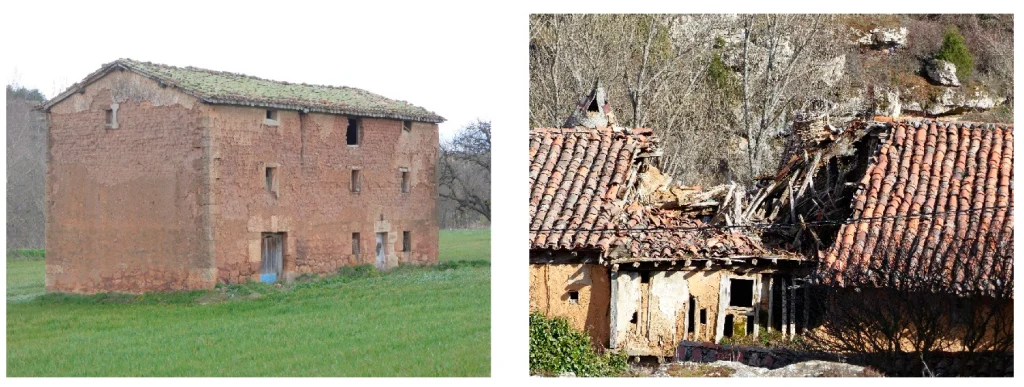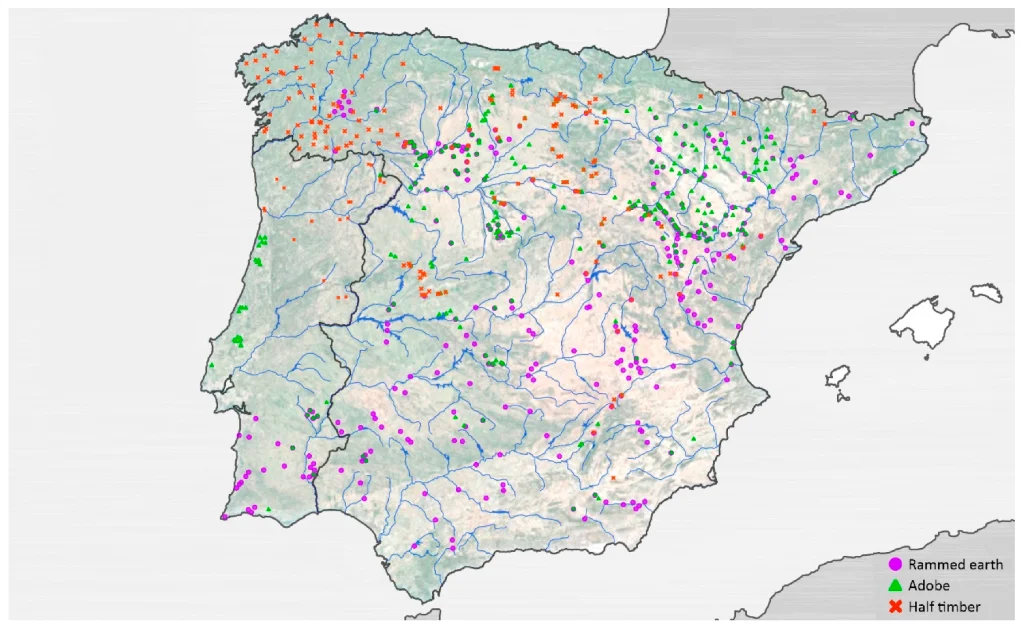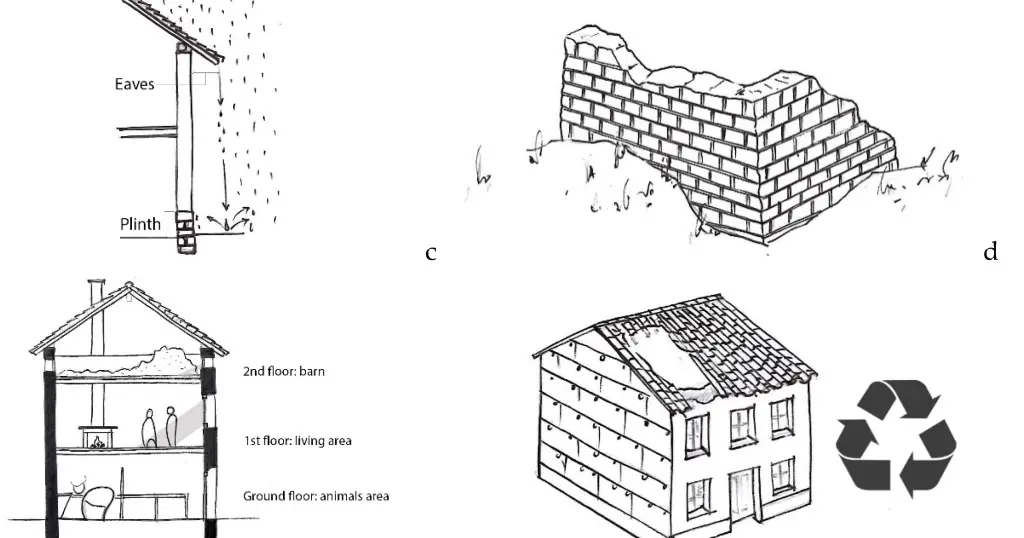Nestled amidst the diverse landscapes of Arizona, Prescott stands as a testament to the profound influence of geography on architecture. This charming city, with its rich history and unique climate, offers a fascinating case study in how topographical and environmental factors shape the built environment.
From the early days of its founding to the modern era, Prescott’s architecture has evolved, adapting to and reflecting the nuances of its geographical setting.

This article delves deep into the interplay between Prescott’s geographic features and its architectural identity, uncovering how each hill, climate pattern, and local material has left an indelible mark on the city’s skyline.
Historical Context
The architectural journey of Prescott, Arizona, is deeply rooted in its historical context, reflecting a rich tapestry of influences and adaptations. Founded in the mid-19th century, Prescott initially showcased simple, utilitarian structures, largely influenced by the natural resources and the needs of its early settlers.
As the city evolved, so did its architecture, absorbing influences from various cultural influxes. Victorian and Revivalist styles began to emerge, mirroring the prosperity and diverse population of the era.
These historical phases of Prescott’s architecture not only demonstrate the city’s growth and transformation but also highlight how each period’s design choices were inextricably linked to the geographical and cultural landscapes of the time.
Prescott’s architectural history, thus, offers a vivid window into the past, showcasing a city that has continually adapted its built environment to meet the changing needs and influences of its inhabitants.
The Early Years
In the late 19th century, Prescott emerged as a central hub during Arizona’s territorial days. The city’s early architecture, primarily constructed from locally sourced materials, was heavily influenced by the natural landscape.
Adobe, a material well-suited to the arid climate, was a popular choice among early settlers. Prescott Historical Society provides a detailed account of these early architectural endeavors, showcasing how the city’s initial layout and building styles were a direct response to its geographic setting.
The indigenous cultures, notably the Yavapai and Tonto Apache tribes, also played a significant role in shaping Prescott’s early architectural landscape. Their traditional dwellings, designed in harmony with the land, set a precedent for sustainable and environmentally integrated building practices.
Evolution Through Time
As Prescott stepped into the 20th century, its architecture began to reflect a blend of influences. The influx of miners and ranchers introduced Victorian and Revivalist styles, as seen in the historic buildings that now line Whiskey Row.
The Sharlot Hall Museum offers a glimpse into this architectural transformation, highlighting how Prescott’s geography continued to play a crucial role in its evolving aesthetic.
Geographic Features and Architectural Responses
Prescott’s unique geographic features have significantly influenced its architectural landscape. The city’s mild, yet distinct, seasonal climate has led to the development of structures with wide eaves and deep porches, providing essential shade and cooling.
The topography, marked by hills and varying elevations, has inspired multi-leveled designs and buildings that follow the natural contours of the land, integrating urban development into the existing landscape. Additionally, the local availability of materials like timber and adobe has shaped traditional construction methods, reflecting a direct response to the natural resources at hand.
This harmonious blend of architecture and geography in Prescott not only showcases the adaptability of design to environment but also highlights the importance of considering geographic elements as integral components of architectural planning and development.
The Impact of Climate
Prescott’s climate, characterized by mild seasons and a notable monsoon period, has significantly influenced architectural designs. Homes and buildings in Prescott often feature wide eaves and deep porches, architectural elements that provide shade and reduce heat.
The use of lighter-colored materials, which reflect sunlight, is also a strategic response to the bright, sunny climate. An excellent resource for understanding these climate-responsive designs is the University of Arizona’s College of Architecture, which delves into the principles of desert architecture.
The city’s colder winter months have also shaped its architectural landscape. The use of insulated materials and south-facing designs, which maximize sunlight exposure, are common practices. These design choices not only respond to Prescott’s unique climatic conditions but also showcase the city’s commitment to energy efficiency and sustainability.
Topographical Influences
Prescott’s varied topography, ranging from its central valley to the surrounding hills and mountains, has directly impacted its urban layout and architectural forms.
The hilly terrain led to the development of multi-level homes and businesses that conform to the land’s natural contours. The City of Prescott’s official website provides maps and information on how the city’s topography influenced its development patterns.
One notable example of topography-influenced architecture is the courthouse plaza, situated in the heart of the city. The plaza and surrounding buildings were designed to integrate seamlessly with the natural elevation changes, creating a harmonious blend of urban and natural environments.
Cultural and Environmental Interplay
In Prescott, the fusion of culture and environment plays a pivotal role in shaping its architectural identity. The city’s buildings and structures are a testament to a rich cultural tapestry, weaving together indigenous, Spanish, and early American influences.
This blend is not only reflective of the area’s historical and cultural diversity but also of its environmental context. Indigenous architectural techniques, emphasizing harmony with the land, blend seamlessly with Spanish Colonial styles, adapted for the arid climate and local materials.
Modern architectural practices in Prescott continue to honor these traditions, increasingly focusing on sustainable and eco-friendly designs.
This interplay between culture and environment in Prescott’s architecture underscores a deep respect for both heritage and habitat, creating a built environment that is as aesthetically pleasing as it is respectful of its natural surroundings.
The Role of Local Culture in Architecture
Prescott’s rich cultural heritage, comprising indigenous, Spanish, and American influences, has left an indelible mark on its architectural identity. The use of Spanish Colonial elements, such as tiled roofs and stucco exteriors, is a nod to the region’s historical ties with Spain and Mexico.
These features not only pay homage to the past but also offer functional benefits, such as durability and thermal insulation.
The indigenous heritage is also reflected in Prescott’s architecture, particularly in the use of natural, locally sourced materials and the emphasis on harmony with the landscape. The Phippen Museum, dedicated to Western art, provides insights into how these cultural influences have been woven into the city’s architectural fabric.
Sustainable Practices and Environmental Concerns
In recent years, Prescott has seen a growing emphasis on sustainable architecture. This shift is partly due to the city’s geographical location, which makes it susceptible to water scarcity and heat. As a result, many new buildings are designed with water conservation and energy efficiency in mind.
Features like rainwater harvesting systems, solar panels, and native landscaping are becoming increasingly common.
Organizations such as Prescott’s Office of Sustainability are at the forefront of promoting these practices. They provide resources and guidelines for environmentally responsible building, ensuring that Prescott’s architecture remains both beautiful and sustainable.
Architectural Styles and Geographic Reflections
In Prescott, the intertwining of architectural styles and geographic features presents a vivid narrative of the city’s history and identity. The region’s diverse topography and climate have significantly influenced architectural choices, leading to a unique blend of styles such as Victorian, Craftsman, and Ranch.
These styles, while distinct, share a common trait: they are all shaped by and adapted to Prescott’s natural environment. Victorian buildings, with their elaborate designs, reflect the city’s prosperous past, while Craftsman homes, known for their simplicity and use of natural materials, harmonize with the local landscape.

The Ranch style, practical and unpretentious, suits the area’s expansive and open terrain. This symbiosis of architecture and geography in Prescott not only highlights the city’s rich cultural heritage but also demonstrates a deep understanding and appreciation of the natural world in urban design.
Defining Prescott’s Architectural Styles
Prescott’s architectural landscape is a mosaic of styles, each bearing the imprint of its geography. Victorian, Craftsman, and Ranch-style homes dot the city, their designs and materials often influenced by the available resources and climate.
The Victorian homes, with their intricate woodwork, reflect the era’s prosperity and the availability of timber in the region. The Prescott Historical Society offers a wealth of information on these styles, illustrating their connection to the city’s geography.
Craftsman homes, celebrated for their simplicity and use of natural materials, also hold a significant place in Prescott’s architectural history. These structures, with their low-pitched roofs and overhanging eaves, are perfectly adapted to the local climate and topography, merging functionality with aesthetic appeal.
Iconic Structures and Their Geographical Links
Several buildings in Prescott stand as landmarks, not just for their architectural beauty but also for their geographical relevance. The Yavapai County Courthouse, for instance, is a prime example of how architecture can be tailored to fit into its natural surroundings.
Built on one of the city’s hills, it offers a panoramic view of the surrounding landscape, symbolizing the unity of nature and urban development. Further details on this and other iconic structures can be found at Visit Prescott’s official website.
Another example is the Hassayampa Inn, a historic hotel that blends local artistry with the practical needs of its desert setting. Its design incorporates elements that are both aesthetically pleasing and climate-appropriate, showcasing how Prescott’s geography has been a driving force in its architectural evolution.
Contemporary Developments and Future Trends
In recent years, Prescott’s architecture has embraced a wave of contemporary developments, reflecting a shift towards modern design while still respecting its geographical roots. This fusion is evident in the use of sustainable materials and energy-efficient technologies, catering to both environmental concerns and aesthetic appeal.
Architects and builders are increasingly focusing on green building practices, such as solar energy utilization and water conservation methods, which align with Prescott’s climate and topographical challenges. Looking towards the future, it’s clear that Prescott’s
Modern Architectural Innovations
In recent years, Prescott’s architecture has seen a shift towards modernity, with contemporary designs that continue to be influenced by the city’s unique geographical features.
The use of sustainable materials, energy-efficient designs, and innovative construction techniques is becoming increasingly prevalent. The American Institute of Architects, Arizona Chapter, provides insights into these modern architectural trends and how they are being implemented in Prescott.
These contemporary structures, while modern in appearance, still pay homage to Prescott’s geographical and cultural roots, incorporating elements that are well-suited to the local climate and topography.
Projecting the Future
Looking forward, it is likely that Prescott’s architecture will continue to evolve in response to its changing geography, particularly in the face of climate change. Adaptations may include increased use of eco-friendly materials and designs that are more resilient to extreme weather conditions.
Forward-thinking projects and predictions can be explored through resources like The Prescott Climate Action Plan, which outlines potential future directions for the city’s development.

As Prescott grows, the challenge will be to balance modern architectural demands with the need to preserve the city’s natural beauty and historical heritage, ensuring that its buildings continue to be shaped by, and in harmony with, their geographical surroundings.
FAQs: Influence of Prescott’s Geography on Its Architecture
What architectural style is most prevalent in Prescott, and why?
Victorian and Craftsman styles are prevalent due to their historical significance and suitability for local materials and climate.
How has Prescott’s architecture adapted to its climate over the years?
Adaptations include the use of wide eaves, deep porches, lighter-coloured materials for climate control and south-facing designs for maximizing sunlight during winter.
What are some examples of buildings in Prescott that are heavily influenced by its geography?
The Yavapai County Courthouse and the Hassayampa Inn are prime examples, designed to complement the local topography and climate.
Are there sustainable architectural practices in Prescott inspired by its geography?
Yes, including rainwater harvesting, use of solar panels, and native landscaping, all of which are influenced by the local environment.
How might Prescott’s architecture evolve in the future with changing geographical conditions?
Future trends may include more resilient and eco-friendly materials and designs to adapt to climate change and preserve natural beauty.
Conclusion
In summary, Prescott’s geography has profoundly influenced its architectural landscape, shaping everything from early settlement designs to contemporary buildings.
The city’s unique climate, topography, and natural resources have all played a role in determining how its buildings are designed, constructed, and evolved.
As Prescott continues to grow, it stands as a living example of how geography and architecture are inextricably linked, each shaping the other in a continuous dance of adaptation and creativity.



Leave a Comment
You must be logged in to post a comment.